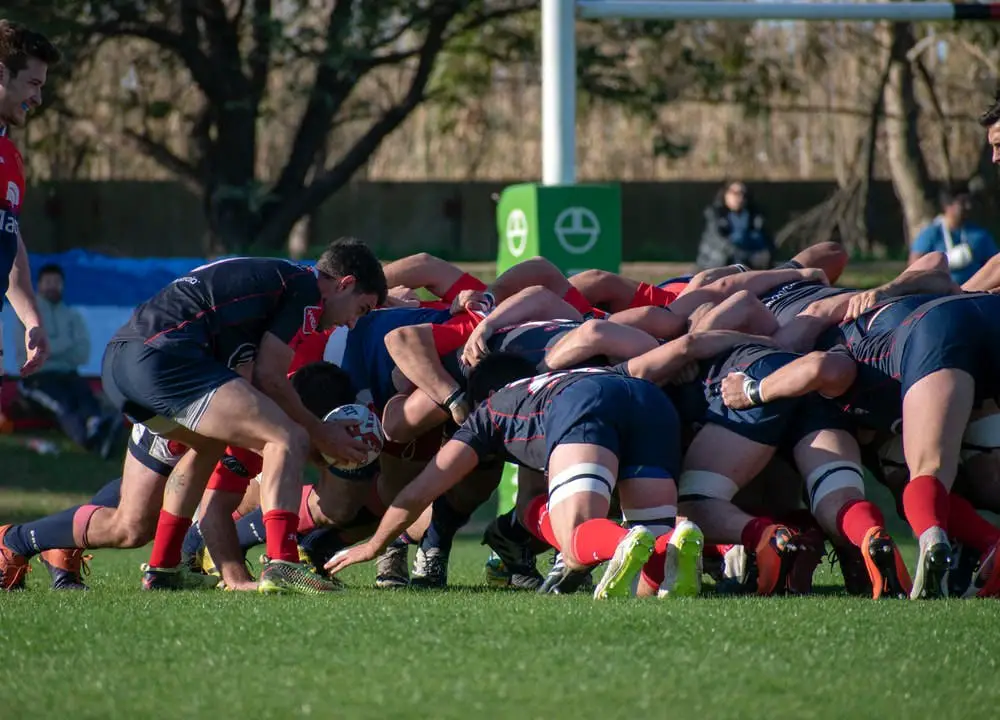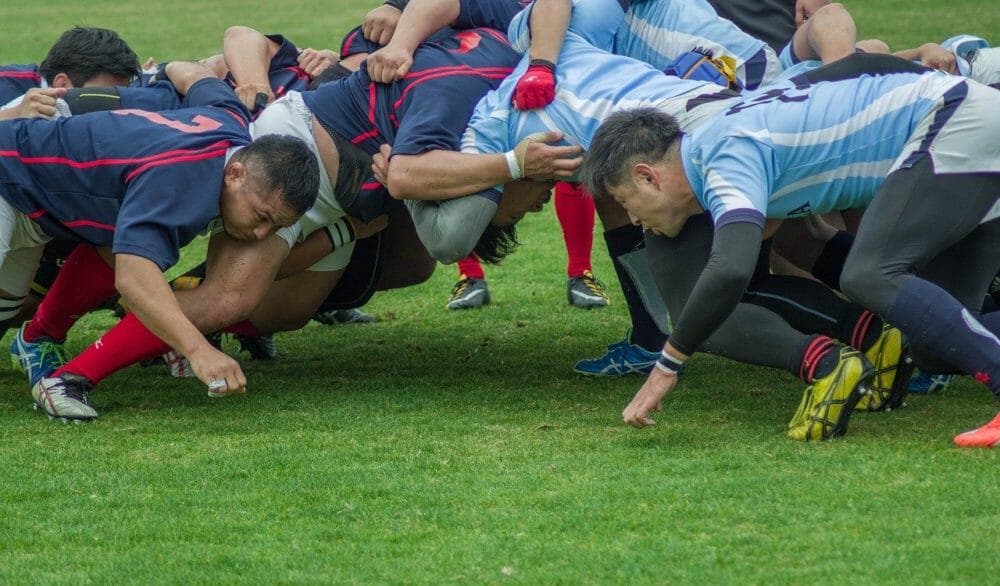Rugby is a sport that was born in England, as its rules were established by the Rugby School in the 19th century. This sport is practiced internationally since it is very popular in all British territories, in addition to Australia, Fiji, New Zealand, South Africa, Uruguay, Argentina, France, and so on. If you have ever seen this sport, you will have noticed its formations. One of them is the scrum. Do you know what scrum is in rugby ?
The scrum or scrim in rugby: what is it and how is it done?
The scrum in rugby is also called scrum and is one of the most characteristic formations of this sport practiced by the forward. Their objective is to restart the game or restart it with a fight for possession of the ball after an infraction or stoppage has occurred. The scrum is characterized by the technique, coordination and strength presented by the forward of the rugby team.

This rugby formation is practiced with a maximum of eight players per team; the minimum number of players for this formation is five, but the most common is eight. These are placed to form three lines for each team and are held together. The players come together in such a way that the heads of the first lines are interspersed. With this formation a tunnel is created through which the scrum half introduces the ball; With this action, the front row players are able to contest possession of the ball by kicking their feet. Heels or hookers must have both feet on the ground until the ball passes.
In addition to being called scrum, the scrum in rugby is also known as Law 20, as it is precisely in this “article” of the rugby legislation where all the principles related to this formation are established: from its composition until its completion. Do you know why it is called melee? Although the name of this formation in English is scrum, in Spain the same name is used as in France, but in Spanish: mêlée.
The formation of the scrum in rugby
As we already anticipated, the scrum in rugby occurs with the formation of two blocks of players from different teams, forming packs with their eight forwards, also called forwards. These follow the structure of three lines according to what is established in Law 20. Once they have been formed, the players crouch and face each other to hold on and wait for the referee to give the order to push. This is when the players must advance on the other to get the ball.
Through the scrum it is intended to sanction a fault that has been minor in order to put the ball in play. In this formation, the unsanctioned team has the advantage by gaining the right to throw the ball between the two packs. The objective is to get hold of the ball until it comes out of the back of the formation, on the side of one of the packs, so that the ball can be disputed. The push between the players follows a series of rules with the aim that the players do not get hurt.
The basic scrum formation in rugby is three lines. The first line is made up of three players, the second line by two and the third line by three. The first line of the scrum is formed by two pillars that are placed on each side of the line, and, in the center is the hooker or hooker. This is in charge of sending the ball back using his heel. The second line of the scrum is made up of two players, usually of great height. The last line is formed by a central player, surrounded by two wings. However, there are other unusual formations, but valid within the game. These are the 3-4-1, 3-3-2 and 3-3-1 formations and are used when you want to have more contact with the midfielders.

Within the scrum rules we find that the players must inform the scrum while the referee gives the indications: squat (crouch), take (bind) and now (set). This is a prompt for the front lines of each team to be taken. On the other hand, when the ball is thrown, the player blocks must push forward. And who throws the ball? As we already anticipated, the scrum half or scrum half is the player who does it and waits, outside the formation, for the ball to leave his side, but he is not part of the block.
Within the rules of scrum formation, the front row players must be connected in such a way that the heads do not face each other (this for the front rows); The other players must remain crouched and with one arm and hand, at least, that oscillates and has freedom of movement along the body of the partner.
Finally, being a somewhat complex formation, in case it collapses, the game stops instantly; but if the collapse occurs intentionally or is rotated more than 90 degrees, the offending team is penalized with a penalty.
Where is the scrum formed?
This formation must be erected where the offense or arrest that produces it occurs. If the penalty occurs within five meters of any of the side lines, the penalty must be formed within five meters of that side line and only scrum can be formed within the field of play. It is the referee who must indicate the scrum by marking with one foot the exact place where the teams must position themselves for the scrum.
Once the referee has designated the site, the teams have 30 seconds to form. Otherwise, the referee will whistle a free hit (a kick) as a sanction.